
More Color, Less Water: Your Spring Garden Refresh
Gardens can be high on style and low on water—here are 14 plants to get you started.
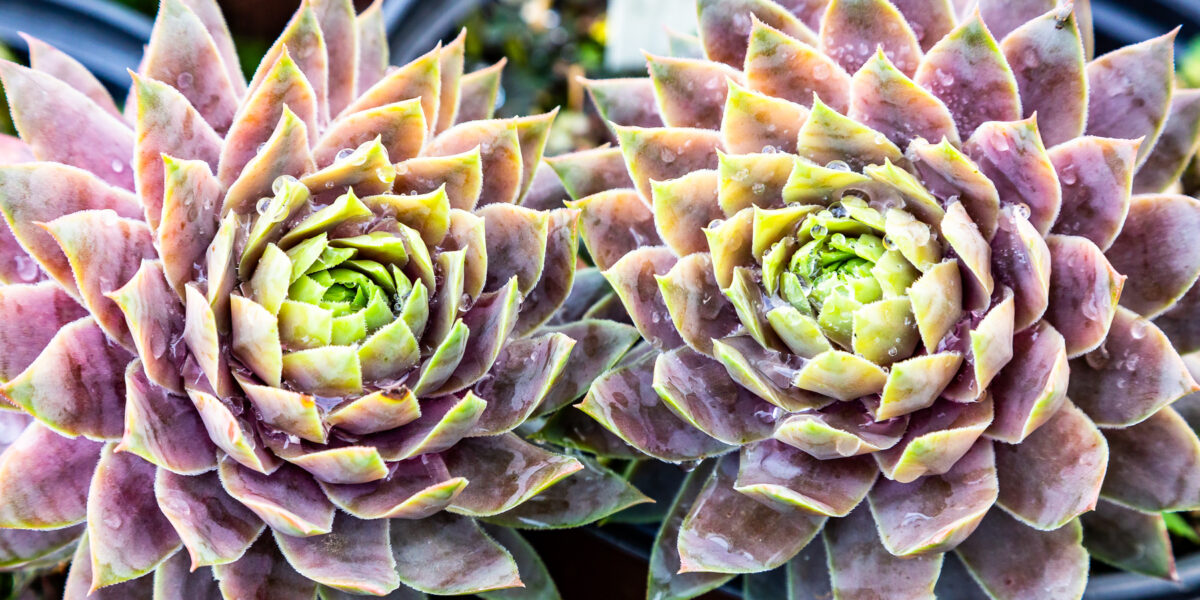
Courtesy of the Sunset Plant Collection
Planting season is in full swing and everyone is looking for an easy way to refresh their space as we spend more time outdoors. Whether you’re starting on a new garden project, or looking to add a few standouts to your growing collection, making a water-wise choice when selecting new plants is key for long-term garden success.
Not only is it important to conserve precious resources in today’s drought-minded climate, the benefits of planting smarter are also incredibly rewarding. Think less time doing maintenance, less money spent on water bills, and in return a diversified ecosystem that will aid in your plants being healthier and growing stronger. But low-water gardens don’t have to sacrifice on style, so we’ve rounded up our favorite plants from the Sunset Plant Collection, each guaranteed to add a little punch of personality to your plot this season.
Sustainable Style
No matter the style of your garden, there’s a low-water plant that can be added into the mix seamlessly. There are options for everything from dynamic desert xeriscapes to seasonally vibrant rain swales, and even unique ones to make your cottage garden sing with more sustainability. Here we break down a few perfect plants that can be plugged into your existing garden or used as an easy starting point to create something entirely new.
Bold Blooms

Courtesy of the Sunset Plant Collection
Low water doesn’t have to mean low color. Choosing a complementary plant palette as an addition to your native or existing garden can add visual appeal to the landscape with colorfully hued foliage and dynamic blooms. Red or magenta blooms make for an exciting and vibrant visual in any landscape, especially when used as a key accent or planted en masse.
“Light Show® Red” (Callistemon viminalis ‘LJ23‘): A more compact variety of bottle brush, this low-growing shrub with long and narrow green-blue foliage displays show-stopping magenta red flowers nearly year-round. It’s excellent when used as an accent, border, or even in containers—try implementing this plant when creating a Mediterranean, butterfly, coastal, or poolside garden and pollinators will thank you.
‘Killer Cranberry’ (Salvia microphylla): Superior glossy foliage and masses of rich magenta flowers make this salvia a standout. Making just as much of an impact as an accent shrub as when it’s mass-planted, this variety works in a number of applications from ground covers to slopes. Aromatic, rich red flowers appear spring through fall, luring honeybees and hummingbirds to your garden.
Pollinator Pit Stop
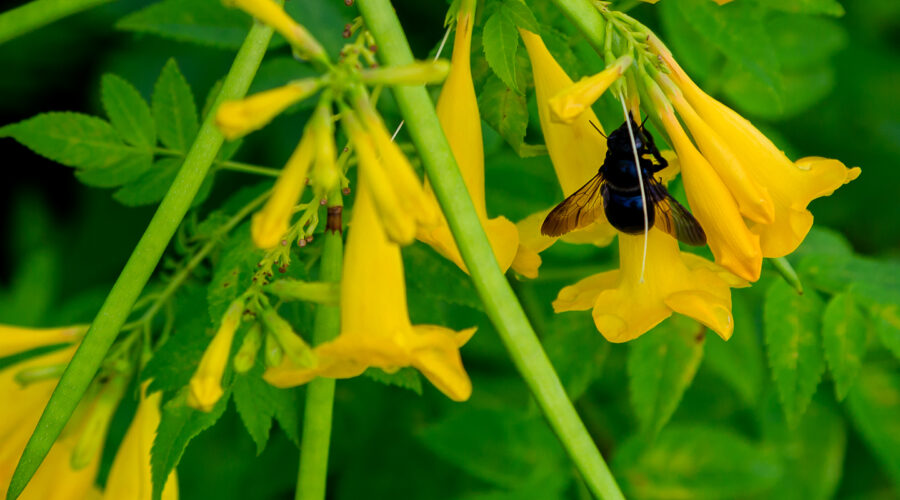
Courtesy of the Sunset Plant Collection
Providing food and host plants for our beneficial insects will not only create a habitat full of life, but also create a healthy ecosystem and in turn a garden less prone to pests and diseases. While many plants on this low-water list will attract our pollinator friends, here are a few standouts that will roll out the welcome mat in style.
Bells of Fire™ (Tecoma stans ‘TEC6010916′): For those who are looking to add both tropical appearance and flower power to the garden, this compact-growing shrub will bloom early in spring and continue to rebloom through the first frost with bright red bell-shaped flowers that are irresistible to butterflies and hummingbirds. It has the ability to cover a lot of area as a border planting or hedge, but it still sings as a specimen spotlight for smaller spaces and placed in a container.
Lydia™ (Tecoma stans ‘TEC60109106’): A compact version of traditional tecomas, Lydia offers wide, deep green foliage and an incredibly long bloom time. This evergreen shrub boasts brilliant yellow flowers from spring until frost. Heat-tolerant and handsome in any landscape, these look particularly stunning when used in a rock garden or as a privacy hedge.
A New Kind of Cut Flower Garden
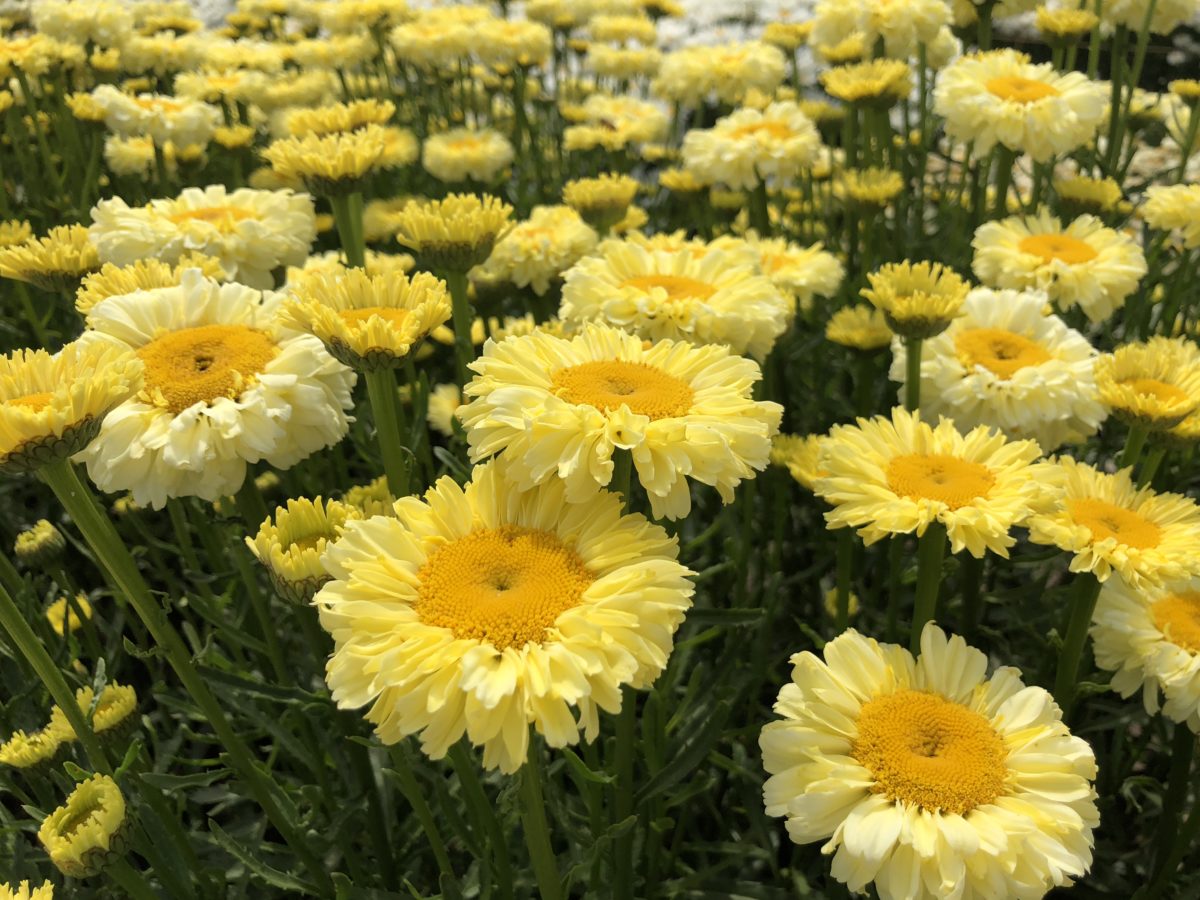
Courtesy of the Sunset Plant Collection
Dreams of becoming your own florist can still come true with a water-wise garden—adding heat-tolerant varieties with punches of personality will add cheer inside and out. Many of our low-water plants can be snipped for bouquets, but these three will give you longer-lasting cut blooms for your centerpiece display.
‘Real Goldcup’ (Leucanthemum superbum ‘L1209-1’): Stunning as an accent, border, or container plant, this is the yellowest Shasta daisy on the market with long-lasting, bright cheerful blooms. Whether you’re growing it in a cottage garden or for cutting flowers, this perennial will keep on giving year after year, blooming perfect buds of happiness for both bees and bouquets.
Pickables™ ColorPop (Dianthus Hybrid ‘Pie-168’): An easy-to-care-for perennial that provides nectar for hummingbirds and butterflies. This border or container plant is bountiful in blooms, with bright hot pink blossoms that make for long-lasting color in your garden and in your bouquets through fall.
‘Totally Tangerine’ (Geum Hybrid): Dazzling sunset-hued blooms that produce five times more than other geum varieties, this annual is gorgeous when mass-planted in borders, but also an unexpected addition when sprinkled into rock gardens.
Structural Statements
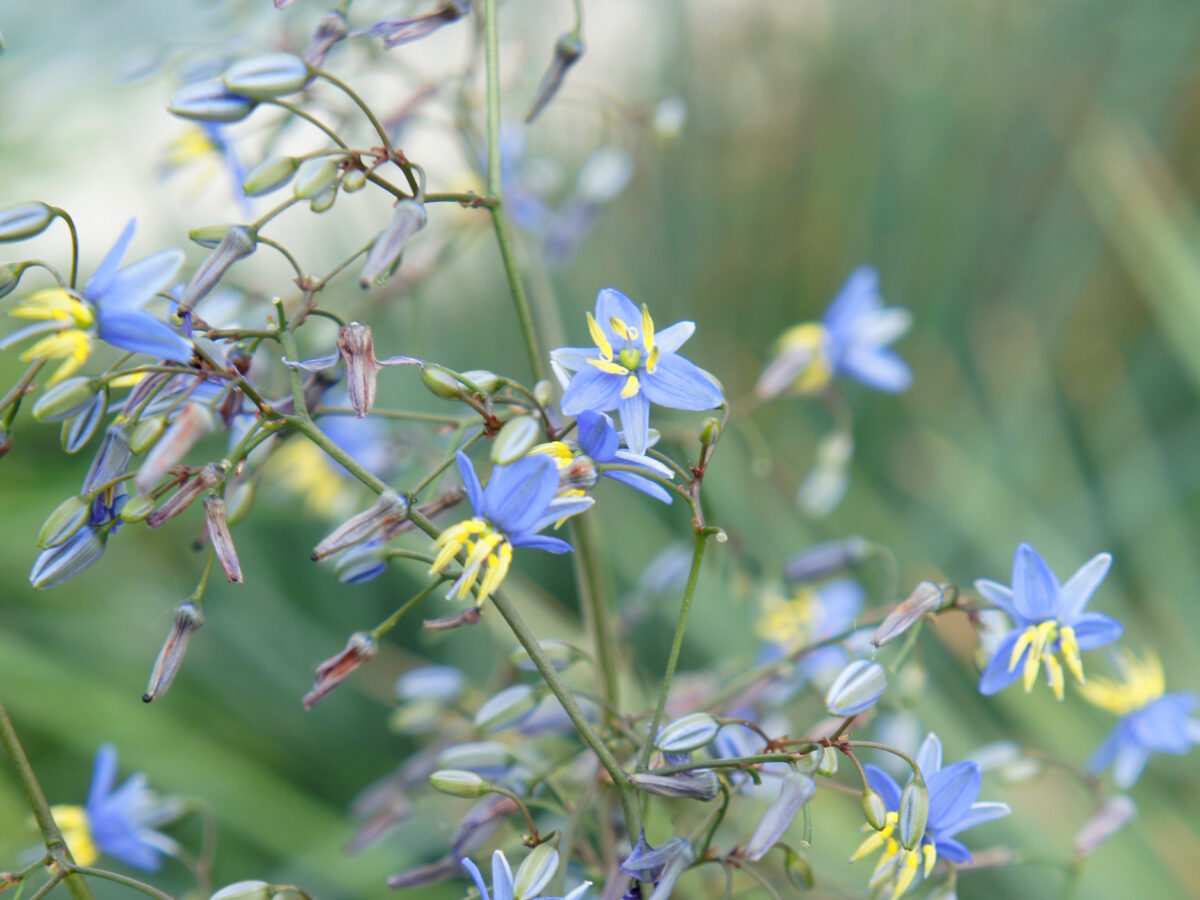
Courtesy of the Sunset Plant Collection
Whether you’re planning on a low-maintenance desert garden, or maximizing your in-ground rain capture with a swale or river rock garden, these plants will provide year-long color and aid in defining architectural shape.
Coolvista™ (Dianella revoluta ‘Allyn-Citation’): Heat-, salt-, sun-, and low water-tolerant—this upright, spiky beauty can be used as an architectural accent anywhere in the garden. It features blue foliage with small blue flowers that arrive in the spring. Try adding this clumping evergreen to borders, containers, rain gardens, and slopes.
Clarity Blue™ (Dianella hybrid ‘DP401’): An outstanding addition to xeriscape or drought-tolerant landscapes, the blue strap-like foliage plays well with succulents, creating height interest and movement to any low-water garden. These make a great accent in smaller gardens and containers as well as when grouped to form borders or cover slopes.
Skyscraper® (Senecio ficoides ‘Mount Everest’): A fabulous structural component for succulent gardens, this towering blue beauty with thick, fleshy, blue-green foliage does not require staking or additional support. Adding some visual interest to rock gardens or borders, it’s both a deer-tolerant and fire-wise planting choice that also makes for an interesting filler for flower arrangements.
SUPERSEMPS® Hens & Chicks (Sempervivum): Add texture and color with these 8-12 inch plate-sized “hens” that surround themselves with “baby chicks,” creating a stunning succulent spread. Use as a groundcover at the front of a water-wise border, rock garden, or even along a curbside strip. These succulents can also be mass-planted as an attractive hillside, making them versatile for small urban spaces and larger gardens alike.
Not Your Momma’s Cottage Garden
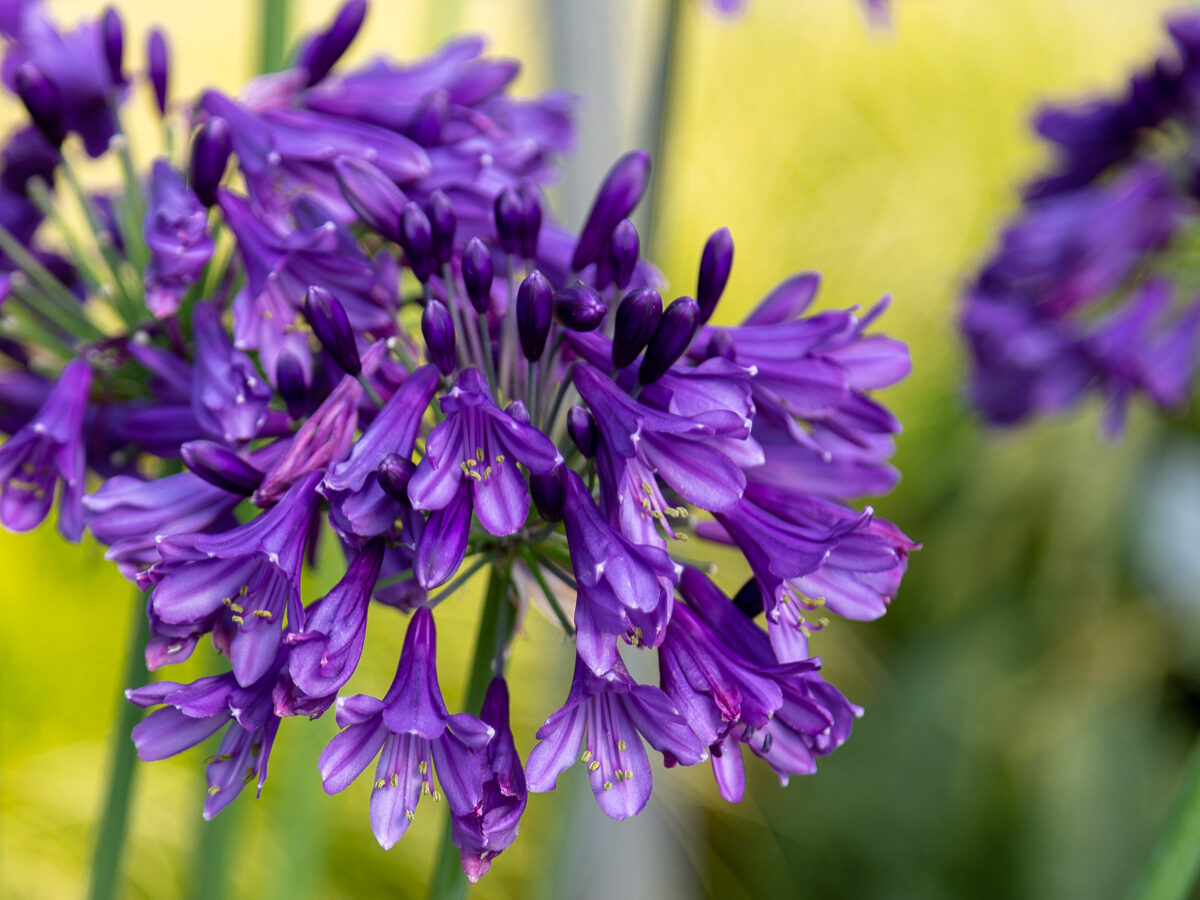
Courtesy of the Sunset Plant Collection
Dreams of a charming English-inspired sanctuary are still a water-wise reality when you pair together the right selection of plants. The key to styling success comes together with this plant pairing of woodland and meadow-like leaf shapes, variegated leaves, and big bouncy blooms.
Ever Series Agapanthus: The Sunset Plant Collection has a host of low-water varieties with blooms ranging from white to deep indigo. Producing multiple flower spikes per season, this is an excellent border plant that will provide for hummingbirds and your cut flower arrangements alike. Try adding a combination of these Sunset Plant Collection standouts for a flowery firework display: Ever Twilight™ (Agapanthus hybrid ‘MDB001’), Ever Amethyst™ (Agapanthus hybrid ‘MP003‘), Ever Sapphire™ (Agapanthus hybrid ‘ANDbin’), Ever White™ (Agapanthus hybrid ‘WP001’).
Miss Lemon™ (Abelia Hybrid ‘Hopleys’): A unique Abelia with bright variegated foliage, this spreading, multi-stemmed shrub has year-long interest showcasing young yellow leaves with green centers that mature into elegant ivory and green fluttering beauties. This plant loves dappled shade but is very heat-tolerant and would be delightful along a garden pathway.
‘Sunshine’ (Ligustrum sinense ‘Sunshine’): With year-round golden foliage in full sun, this is an easy-to-care-for, yet colorful addition to any water-wise garden. A tough plant with many applications, it can be trimmed as a hedge, planted in drifts for a dynamic border, or even trained into a cottage topiary.
Tips for Success
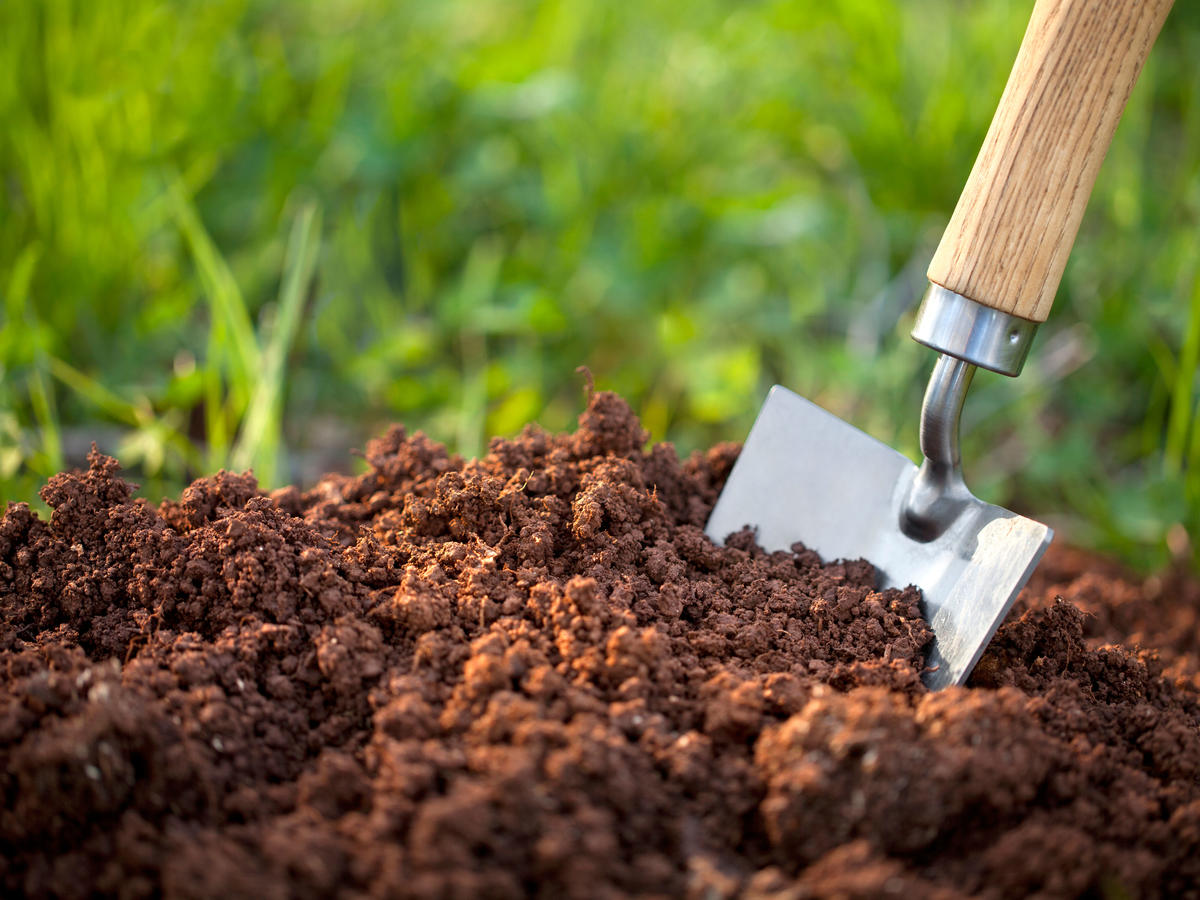
Courtesy of Getty Images
Every garden’s success depends on proper preparation, planning, and ongoing care. If you’re going to take the time and effort to introduce new plants to your garden, it’s in your best interest to set them off on the right foot for many healthy growing seasons ahead. Here are our tips for creating and maintaining a healthy home for your new plants.
Prep & Planning
Having your garden site ready for planting before bringing any plants home will make getting everything into the ground a breeze. Be sure to remove any weeds in the area as they can compete for soil nutrients. When it comes to amending soil, low-water plants require good drainage. By adding organic matter such as compost or shredded leaves, even heavy clay soil will drain more easily while increasing biological activity necessary for plant growth and health.
Irrigation
While low-water plants require less watering, they also require smarter watering. Most drought-tolerant and dry-loving plants do not tolerate water on their stems or crowns, both allowing for crown rot and disease to set in. Drip irrigation allows you to soak plants deeply at the root, where the water is needed most.
Additionally, when grouping plants with similar water requirements together, a planting practice called Hydrozoning, you are able to efficiently use irrigation water—ideally deeply and less frequently. Tapping into alternative water sources such as rain barrels and greywater helps keep your resources down as well.
Ongoing Maintenance
Adding mulch around new plantings is important to aid in the retention of moisture and suppression of nutrient zapping weeds. Be sure to keep the area surrounding the plant’s stems and root crown clear to avoid extra moisture, which could lead to rot. Most importantly, your ongoing plant selections and low-water additions are key to a vibrant low-water garden. Continue to replace “thirsty” plants with those well suited to low-water conditions and prepare to be rewarded by their excellence and ease of care.
We hope you’re inspired to add some low-water plants to your garden. Happy planting to you; we can’t wait to see which of these plants you pick for your plot!
Read the Current Issue Here!
Get one year of Sunset—and all kinds of bonuses—for just $29.95. Subscribe now!
